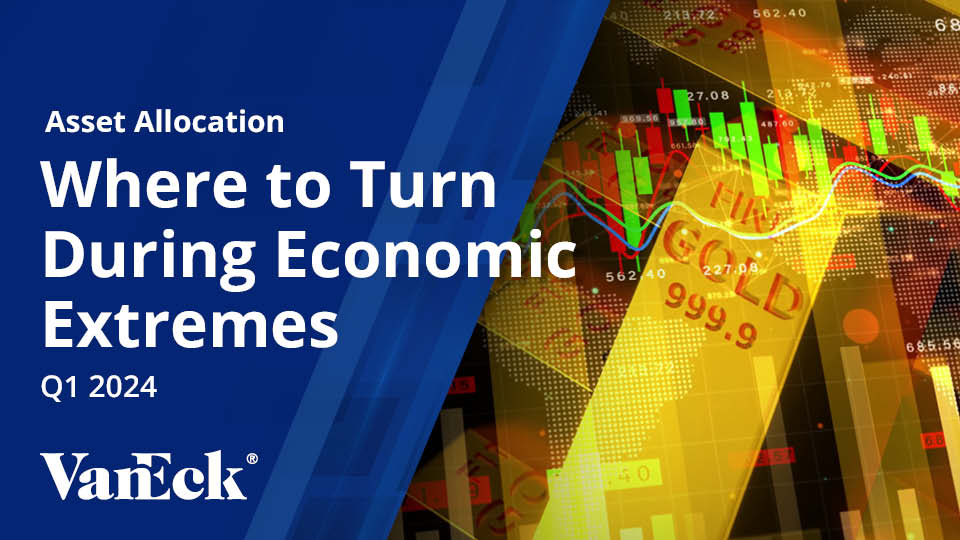Inflation Fight Night: Fed Chair vs. The Senator
March 15, 2023
Read Time 6 MIN
The three-round exhibition fight occurred on Tuesday, March 7, when Federal Reserve Chairman Jerome Powell testified before the Senate Banking Committee. Both opponents arrived well-prepared for the bout, which led to an exciting showdown. Given their influence, this commentary focuses on the main points of the exchange, intending to provide a politically unbiased view of the problems and the possible, appropriate investment solutions.
Here are the issues around which each round was fought.
Round #1: The Fed cannot tame inflation with higher interest rates alone
We agree with Senator Elizabeth Warren that the fight against inflation cannot be fought exclusively by wielding the demand destruction that results from higher interest rates. She specifically mentioned “price gouging,” “supply chain kinks,” and the “war in Ukraine” as inflationary forces that cannot be controlled through monetary policy.
The term “price gouging” is used to vilify companies for passing along increased costs to consumers. The declining profit margins of companies in the S&P 500® Index reveal that corporations are not “gouging” but suffering from high inflation—just as are individuals.
S&P 500 Operating Margin vs. CPI
Source: Bloomberg, Data as of 3/2023. Past performance is no guarantee of future results.
While “supply chain kinks” were once a significant source of high prices, the evidence suggests this is no longer true. As measured by the Federal Reserve Global Supply Chain Pressure Index, supply chains have corrected mainly and are now back at pre-COVID-19 levels. Supply chains likely are neither now nor will be a major source of inflation going forward.
Global Supply Chain Pressure
Source: Bloomberg, Data as of 2/2023. Past performance is no guarantee of future results.
We do, though, agree that the war in Ukraine further aggravates inflation and that the economic consequences are likely to last for an extended period. War, in general, is highly inflationary because it diverts away productivity and efficiencies across global economies. The chart below demonstrates how periods of war have historically coincided with higher inflation.
U.S. CPI YoY Change (%)
Source: Bloomberg, Data as of 12/2022. Past performance is no guarantee of future results.
Since restrictions on the availability of commodities have global inflationary implications, this conflict is particularly inflationary given the significance of both Russia and Ukraine as commodity producers. The chart below demonstrates just why Russia is such a commodities powerhouse.
Top 5 Countries in Global Production (2020 – 2021, Descending Order)
Source: Bloomberg, Company Data, Goldman Sachs Global Investment Research, Argus, WoodMac, USDA, USGS. Data as of 1/2022. Past performance is no guarantee of future results. Not intended as a recommendation to buy or sell securities of any sector mentioned herein.
However, we believe Senator Warren left out four very key risks that illustrate why monetary policy alone may not be enough to combat inflation:
- The use of debt monetization to finance government overspending.
- The failure to invest in the production of traditional energy.
- The fact that “social spending” increases aggregate demand.
- The cost increase resulted from de-globalization (e.g., on-shoring in the U.S.).
In the interest of brevity in this piece, we can expand upon these topics in future commentaries.
Round #2: The Fed will likely cause a severe recession, and many people will lose their jobs
Senator Warren points out that, since the end of WWII, there have been 12 times when the unemployment rate increased by 1% or more within one year, and each time it resulted in a recession. Furthermore, once the economy starts losing jobs, it typically “turns into a runaway train that is very hard to stop.” In 11 out of those 12 times, unemployment rose at least another 1% or more after the initial 1%.
We agree and expect a hard landing. The chart below demonstrates the cause-and-effect relationships between inflation, interest rates, and unemployment. The last inflationary event of a similar magnitude was in the 1970s, resulting in a double-digit unemployment rate. While we do not believe such a severe downturn will emerge, the historical data cast heavy doubt on the expectation of a soft landing.
CPI vs. Fed Funds Rate vs. Unemployment
Source: Bloomberg, Data as of 12/2022. Past performance is no guarantee of future results.
Round #3: Fire Powell
Senator Warren concluded her statement: “Chairman Powell, you are gambling with people’s lives. We need a Fed that will fight for working families. If you are not going to lead that charge then we need someone at the Fed that will.”
While this rhetoric may be politically expedient for Senator Warren, firing Chairman Powell will not solve the problem. Higher interest rates, in coordination with the resolution of supply-side bottlenecks, are necessary weapons in the fight against inflation.
The unkind truth is that millions of jobs will likely be sacrificed to ease the inflation burden on over 330 million Americans. The charts below demonstrate that, in the aggregate, the cost of inflation is much more substantial because it impacts everyone, not just those losing their jobs.
Lost Real Income Per Increase In Unemployment
Lost Real Income Per Increase In Inflation level
Source: St. Louis Federal Reserve Bank. Data as of 9/2022. Past performance is no guarantee of future results.
The Fight Result
After three rounds of vigorous action, we go to the scorecards and declare the victory to Senator Elizabeth Warren by a slim margin. The most important takeaway was that high inflation must be addressed from both the demand and supply sides. Destroying the economy to bring the balance between demand and supply in line is only a temporary solution, at best. Eventually, the Fed will be required to relent. And, unless the supply-side issues are resolved, specifically in commodities, our expectation is of a resurgence in inflation.
Investment Solutions
First, you must stop assuming that inflation will just disappear. The chart below demonstrates how wrong the consensus view on inflation has been by comparing the differences between inflation expectations and inflation. Right now, the expectation is that the inflation rate will be 3.9% in 12 months. Will that prove to be right—maybe? Even a broken clock is right twice a day. But don’t bet your nest egg on it.
Inflationary events of the past have occurred frequently (30% of the time, the CPI—the consumer price index—has been above 4%), and globally, on average, these events have lasted well over a decade.
U.S. Inflation & Expectation 2021-2023
Source: Bloomberg, Data as of 1/2023. Past performance is no guarantee of future results.
Secondly, consider a 10-20% strategic allocation to diversified real assets. Real assets have the ability to outperform during periods of high inflation because of the scarcity of physical goods during inflationary events. Our preferred solution is the Van Eck Inflation Allocation ETF (“RAAX”). It offers an adaptive allocation across a diversified portfolio of inflation-fighting assets.
The chart below demonstrates the performance of RAAX, relative to both stocks and bonds, since inflation exceeded 2%.
VanEck Inflation Allocation ETF vs. Stocks/Bonds 2021-2023
Source: Bloomberg, Data as of 1/2023. Past performance is no guarantee of future results. Not intended as a recommendation to buy or sell any securities mentioned herein.
Thank you for taking the time to read our commentary. And cross your fingers if you are not invested in diversified, inflation-fighting real assets.
To receive more Asset Allocation insights, sign up in our subscription center.
Related Topics
Related Insights
February 28, 2024
February 22, 2024
December 19, 2023
Important Disclosures
This is not an offer to buy or sell, or a solicitation of any offer to buy or sell any of the securities mentioned herein. The information presented does not involve the rendering of personalized investment, financial, legal, or tax advice. Certain statements contained herein may constitute projections, forecasts and other forward-looking statements, which do not reflect actual results. Information provided by third–party sources are believed to be reliable and have not been independently verified for accuracy or completeness and cannot be guaranteed. Any opinions, projections, forecasts, and forward–looking statements presented herein are valid as of the date of this communication and are subject to change without notice. The information herein represents the opinion of the author(s), but not necessarily those of VanEck or its employees.
S&P 500 Index is widely regarded as the best single gauge of large–cap U.S. equities. The index is a float–adjusted, market–cap–weighted index of 500 leading U.S. companies from across all market sectors including information technology, telecommunications services, utilities, energy, materials, industrials, real estate, financials, health care, consumer discretionary, and consumer staples. Federal Reserve Global Supply Chain Pressure Index was developed by the Federal Reserve Bank of New York and includes 27 monthly variables reflecting events within supply chains and transportation costs in the maritime and air cargo sectors. Consumer Price Index is an index of the variation in prices paid by typical consumers for retail goods and other items. Bloomberg U.S. Aggregate Bond Index broadly tracks the performance of the U.S. investment-grade bond market.
Benchmark index returns are not Fund returns and do not reflect any management fees or brokerage expenses. Certain indices may take into account withholding taxes. Investors cannot invest directly in the Index. Returns for actual Fund investors may differ from what is shown because of differences in timing, the amount invested and fees and expenses. Index returns assume that dividends have been reinvested.
The S&P 500 Index is a product of S&P Dow Jones Indices LLC and/or its affiliates and has been licensed for use by Van Eck Associates Corporation. Copyright © 2023 S&P Dow Jones Indices LLC, a division of S&P Global, Inc., and/or its affiliates. All rights reserved. Redistribution or reproduction in whole or in part are prohibited without written permission of S&P Dow Jones Indices LLC. For more information on any of S&P Dow Jones Indices LLC’s indices please visit www.spglobal.com/spdji/en/. S&P® is a registered trademark of S&P Global and Dow Jones® is a registered trademark of Dow Jones Trademark Holdings LLC. Neither S&P Dow Jones Indices LLC, Dow Jones Trademark Holdings LLC, their affiliates nor their third party licensors make any representation or warranty, express or implied, as to the ability of any index to accurately represent the asset class or market sector that it purports to represent and neither S&P Dow Jones Indices LLC, Dow Jones Trademark Holdings LLC, their affiliates nor their third party licensors shall have any liability for any errors, omissions, or interruptions of any index or the data included therein.
The Global Supply Chain Pressure Index (GSCPI) does not represent official estimates of the Federal Reserve Bank of New York, its President, the Federal Reserve System, or the Federal Open Market Committee.
VanEck Inflation Allocation ETF (RAAX): An investment in the Fund may be subject to risks which include, among others, risks related to investing in real assets ETPs, which may subject the Fund to commodities, gold, natural resources companies, MLPs, real estate sector, infrastructure, ETP-related equity securities, small- and medium-capitalization companies, foreign securities, emerging market issuers, ETP-related foreign currency, credit, interest rate, call, concentration and derivative risks, all of which may adversely affect the Fund. The Fund may also be subject to fund of funds, affiliated fund, U.S. Treasury Bills, subsidiary investment, commodity regulatory (with respect to investments in the Subsidiary), tax (with respect to investments in the Subsidiary), cryptocurrency, cryptocurrency tax, liquidity (with respect to commodities instruments), gap, cash transactions, high portfolio turnover, models and data, active management, operational, authorized participant concentration, no guarantee of active trading market, trading issues, market, fund shares trading, premium/discount and liquidity of fund shares, and non-diversified risks. Foreign investments are subject to risks, which include changes in economic and political conditions, foreign currency fluctuations, changes in foreign regulations, and changes in currency exchange rates which may negatively impact the Fund's returns. Small- and medium-capitalization companies may be subject to elevated risks.
Investing in cryptocurrencies comes with a number of risks, including volatile market price swings or flash crashes, market manipulation, and cybersecurity risks. In addition, cryptocurrency markets and exchanges are not regulated with the same controls or customer protections available in equity, option, futures, or foreign exchange investing. There is no assurance that a person who accepts a cryptocurrency as payment today will continue to do so in the future.
Investing involves substantial risk and high volatility, including possible loss of principal. An investor should consider the investment objective, risks, charges and expenses of the Fund carefully before investing. To obtain a prospectus and summary prospectus, which contains this and other information, call 800.826.2333 or visit vaneck.com. Please read the prospectus and summary prospectus carefully before investing.
©️ 2023 Van Eck Securities Corporation, Distributor, a wholly owned subsidiary of Van Eck Associates Corporation.
Related Funds
Important Disclosures
This is not an offer to buy or sell, or a solicitation of any offer to buy or sell any of the securities mentioned herein. The information presented does not involve the rendering of personalized investment, financial, legal, or tax advice. Certain statements contained herein may constitute projections, forecasts and other forward-looking statements, which do not reflect actual results. Information provided by third–party sources are believed to be reliable and have not been independently verified for accuracy or completeness and cannot be guaranteed. Any opinions, projections, forecasts, and forward–looking statements presented herein are valid as of the date of this communication and are subject to change without notice. The information herein represents the opinion of the author(s), but not necessarily those of VanEck or its employees.
S&P 500 Index is widely regarded as the best single gauge of large–cap U.S. equities. The index is a float–adjusted, market–cap–weighted index of 500 leading U.S. companies from across all market sectors including information technology, telecommunications services, utilities, energy, materials, industrials, real estate, financials, health care, consumer discretionary, and consumer staples. Federal Reserve Global Supply Chain Pressure Index was developed by the Federal Reserve Bank of New York and includes 27 monthly variables reflecting events within supply chains and transportation costs in the maritime and air cargo sectors. Consumer Price Index is an index of the variation in prices paid by typical consumers for retail goods and other items. Bloomberg U.S. Aggregate Bond Index broadly tracks the performance of the U.S. investment-grade bond market.
Benchmark index returns are not Fund returns and do not reflect any management fees or brokerage expenses. Certain indices may take into account withholding taxes. Investors cannot invest directly in the Index. Returns for actual Fund investors may differ from what is shown because of differences in timing, the amount invested and fees and expenses. Index returns assume that dividends have been reinvested.
The S&P 500 Index is a product of S&P Dow Jones Indices LLC and/or its affiliates and has been licensed for use by Van Eck Associates Corporation. Copyright © 2023 S&P Dow Jones Indices LLC, a division of S&P Global, Inc., and/or its affiliates. All rights reserved. Redistribution or reproduction in whole or in part are prohibited without written permission of S&P Dow Jones Indices LLC. For more information on any of S&P Dow Jones Indices LLC’s indices please visit www.spglobal.com/spdji/en/. S&P® is a registered trademark of S&P Global and Dow Jones® is a registered trademark of Dow Jones Trademark Holdings LLC. Neither S&P Dow Jones Indices LLC, Dow Jones Trademark Holdings LLC, their affiliates nor their third party licensors make any representation or warranty, express or implied, as to the ability of any index to accurately represent the asset class or market sector that it purports to represent and neither S&P Dow Jones Indices LLC, Dow Jones Trademark Holdings LLC, their affiliates nor their third party licensors shall have any liability for any errors, omissions, or interruptions of any index or the data included therein.
The Global Supply Chain Pressure Index (GSCPI) does not represent official estimates of the Federal Reserve Bank of New York, its President, the Federal Reserve System, or the Federal Open Market Committee.
VanEck Inflation Allocation ETF (RAAX): An investment in the Fund may be subject to risks which include, among others, risks related to investing in real assets ETPs, which may subject the Fund to commodities, gold, natural resources companies, MLPs, real estate sector, infrastructure, ETP-related equity securities, small- and medium-capitalization companies, foreign securities, emerging market issuers, ETP-related foreign currency, credit, interest rate, call, concentration and derivative risks, all of which may adversely affect the Fund. The Fund may also be subject to fund of funds, affiliated fund, U.S. Treasury Bills, subsidiary investment, commodity regulatory (with respect to investments in the Subsidiary), tax (with respect to investments in the Subsidiary), cryptocurrency, cryptocurrency tax, liquidity (with respect to commodities instruments), gap, cash transactions, high portfolio turnover, models and data, active management, operational, authorized participant concentration, no guarantee of active trading market, trading issues, market, fund shares trading, premium/discount and liquidity of fund shares, and non-diversified risks. Foreign investments are subject to risks, which include changes in economic and political conditions, foreign currency fluctuations, changes in foreign regulations, and changes in currency exchange rates which may negatively impact the Fund's returns. Small- and medium-capitalization companies may be subject to elevated risks.
Investing in cryptocurrencies comes with a number of risks, including volatile market price swings or flash crashes, market manipulation, and cybersecurity risks. In addition, cryptocurrency markets and exchanges are not regulated with the same controls or customer protections available in equity, option, futures, or foreign exchange investing. There is no assurance that a person who accepts a cryptocurrency as payment today will continue to do so in the future.
Investing involves substantial risk and high volatility, including possible loss of principal. An investor should consider the investment objective, risks, charges and expenses of the Fund carefully before investing. To obtain a prospectus and summary prospectus, which contains this and other information, call 800.826.2333 or visit vaneck.com. Please read the prospectus and summary prospectus carefully before investing.
©️ 2023 Van Eck Securities Corporation, Distributor, a wholly owned subsidiary of Van Eck Associates Corporation.



